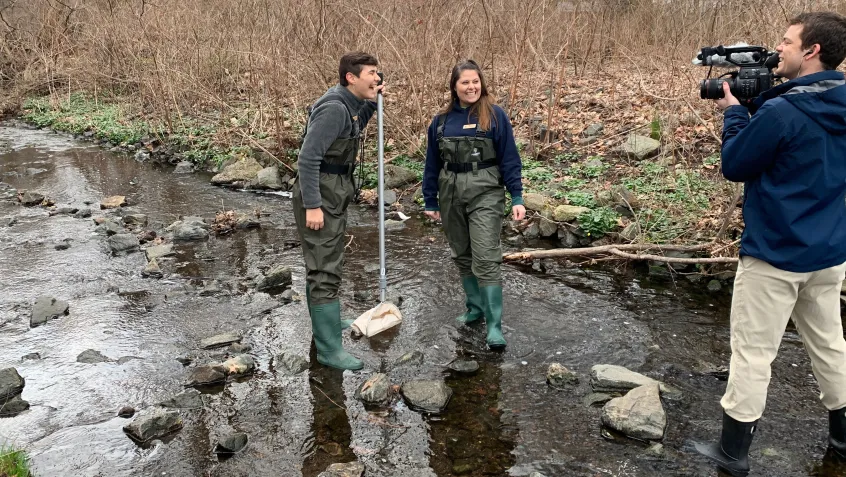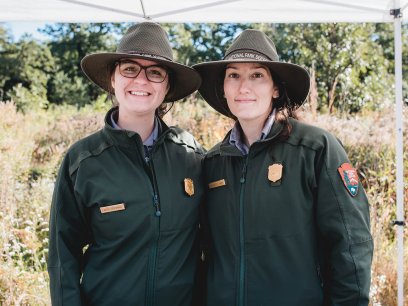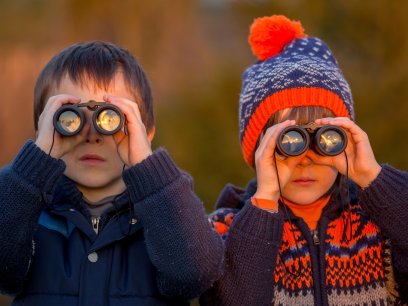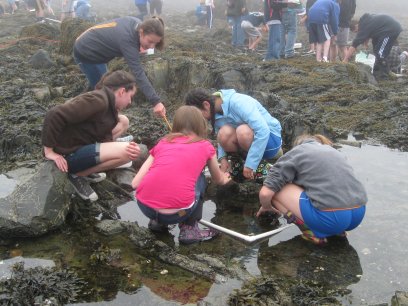
Among the many challenges of the COVID-19 pandemic, one of the few bright spots is that Americans have developed an increased appreciation for teachers. As parents and children have adapted to distance learning at home, it has underscored the value of in-person learning facilitated by professional educators and the hard work they put in each day.
American Education Week (November 11-15) serves as a timely reminder to celebrate public education and honor the individuals making a difference to ensure that every student receives a quality education. And what better way to do that than to highlight a few of NEEF's successful Greening STEM projects that demonstrate place-based learning and other instructional strategies you can use for inspiration.
Water Quality: Teaneck Creek Conservancy
NEEF recently helped provide hands-on field experience to New Jersey middle schoolers by partnering with the Teaneck Creek Conservancy, Samsung, and Benjamin Franklin Middle School in Teaneck, NJ. The Greening STEM project engaged 7th-grade students in a water quality monitoring project and 8th-grade students in a macroinvertebrate biomonitoring study at their local watershed.
In addition to students finding the outdoor field experiences “more fun and interesting,” these place-based learning opportunities helped them practice what they're learning in the classroom. “When we do hands-on and we do labs and we record, I understand it more because I can really visualize it and see what I'm actually doing,” explained one middle school student. Another student talked about the thrill of understanding the lessons using his senses and “finding new things instead of being told what they were.” Talk about a memorable learning experience!
“I'm excited for the kids going out into the field and [to] be able to apply what we learned in the textbook to the real world,” shared Stephanie Paz, a science teacher at the school. “This is what scientists do. They don't just sit in a classroom. They actually go out and explore what's out there and try to solve actual problems.”
The Takeaway
What nearby public land or water site would make for a great inquiry-based, hands-on field experience for students to investigate a local water resource and learn about water quality? You can also encourage students to explore their own impacts on the local watershed by tracing water flow through their communities. When rain falls, where does the water go, and what does it carry with it?
Air Pollution: Great Smoky Mountains National Park
Students investigated the impact of acid rain and air pollution at Great Smoky Mountains National Park. While in the park, students learned how to utilize technology to collect data as they monitored water quality, lichens, salamanders, terrestrial invertebrates, and conducted ozone biomonitoring.
“Hopefully, having students collect real data will help connect them to the park and also to science,” said a National Park Service Ranger speaking about the value of hands-on engagement in citizen science. “It makes the science come alive for them and helps to make the connections to what they're reading.”
The Takeaway
What citizen science-based project could provide your students with a Greening STEM field experience in your area? Use our primer on citizen science to see what projects are available in your area, or better yet, start your own!
Wildlife and Habitat: Saguaro National Park
Students helped the park in finding evidence of five species of small carnivores not documented in the past 10 years at Saguaro National Park. Classes were divided into research teams and assigned a lost species. Students set cameras in the park and at school to collect data that would help determine management strategies at the park. They researched habitat requirements and determined the best location to place cameras so students could hopefully observe the animals remotely.
Recounting how one student correctly predicted what a camera captured (a coyote) based on nearby tracks, a National Park Service Ranger said, “It was amazing that he connected those things together.” Working in teams, the students got to present their management recommendations to park staff, allowing them to develop 21st century skills and a stewardship ethic.
The Takeaway
What local park or green space would provide hands-on learning opportunities about wildlife and their habitats? BioBlitzes are a great way to show that nature is teeming with life even in a relatively small space, such as a park or backyard. If students are unable to get outside, they can still observe the environment through wildlife cameras or just by looking out the window!
Implement the Greening STEM Model in Your Classroom
Inspired to get your students out in the field? Visit NEEF's Greening STEM hub for more information and to download the free Idea Journal for Educators. (Look for the call-out box on Greening STEM hub page.)


